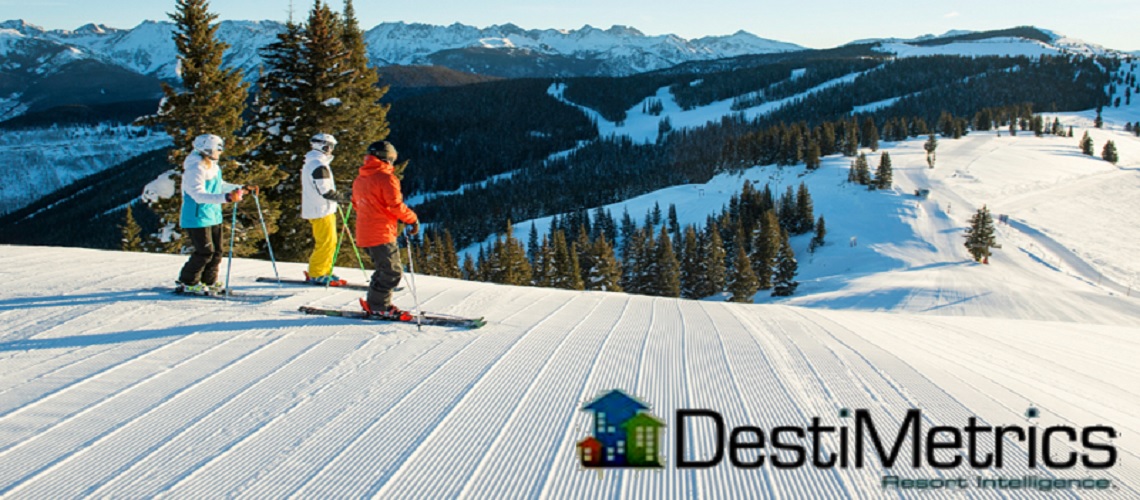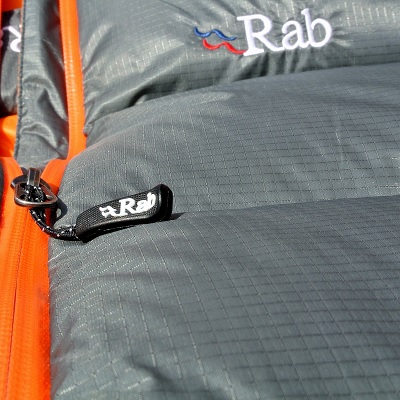Destimetrics - Some New Winter Records For Mountain Lodging; But Summer Rate Gains Slowing and Booking Pace Down

At the close of a gangbusters kind of winter season, lodging properties at 17 mountain destinations across seven western states posted several new all-time records for occupancy, daily rates, and revenue. The full season results were released by DestiMetrics,* the Business Intelligence division of Inntopia, in their Monthly Market Briefing with year-over-year comparisons to the previous three seasons, including the previous record season of 2018-19, the abruptly shortened 2019-20 season, and last year’s season that was boosted by the widespread availability of COVID-19 vaccinations. For most of the past 14 months, daily rates have been rising consistently and dramatically, but as inflation persists, gas prices rise, and other economic uncertainties loom, for the first time since early 2021, years, the pace of rising rates is slowing. At the same time, the pace of bookings is continuing to languish compared to recent years—with the exception of 2020. Aggregated results are from approximately 28,000 lodging units through April 30.
It’s a wrap: the full winter season from November through April
This year compared to last year (2020-21): occupancy was up 23.8 percent, the Average Daily Rate (ADR) was up an impressive 37.9 percent, and mountain lodging properties banked a 70.1 percent increase in revenues.
This year compared to two years ago (2019-20): occupancy was up 30.9 percent (because virtually all resorts had closed by March 15—losing the last 4-5 weeks of that season). ADR for the season finished up a sharp 24.5 percent to yield a formidable 63 percent increase in aggregated revenue.
This year compared to three years ago and the previous record season (2018-19): occupancy was up 2.3 percent although the months of November and January had declines. The ADR finished up a remarkable 33.5 percent compared to nightly rates three years ago and when combined with slightly higher occupancy, delivered a sizeable 36.6 percent increase in aggregated revenue for the season.
“The winter season definitely ended on a high note with a new revenue record and some truly dazzling performance numbers related to room rates,” said Tom Foley, senior vice president of Business Intelligence for Inntopia. “But we’re tempering our enthusiasm a bit when it comes to occupancy. Although by the numbers the season yielded a 2.3 percent occupancy gain on the previous record in 2018-19, the number of actual room nights that were booked was almost perfectly flat this year when compared to that occupancy record set three years ago.”
Foley went on to explain that “the occupancy record is statistically correct, but only because there were 2.3 percent fewer room nights available for the calculations because homeowners and professional managers pulled units out of the available rental inventory in the wake of the pandemic—so it is important to clarify that detail and provide context to this year’s occupancy record.”
Mountain lodging properties are celebrating great rates and revenue wins this season but as Foley observed, “what is most notable is that those revenue wins came in a season with only average or below average snowfall in many regions, staffing shortages and long lift lines in some locations, and the nasty Omicron surge in December and January that had the potential to wreak some serious damage. But once again, loyal and enthusiastic skiers and riders flocked to the slopes this year to get their mountain vacations.”
Summer forecast
Summer bookings for May through October are currently comparable to last summer and dramatically better than Summer 2020 when the pandemic and uncertainty raged. But compared to three summers ago, a slight decline has emerged.
As of this same time one year ago (2021): on-the-books summer occupancy is up 2.3 percent with gains currently being posted in four of the six months with the peak months of July and August down 3.5 and 8.4 percent respectively. ADR is up 4.5 percent to deliver a 6.7 percent increase in summer revenues. This is the smallest rate gain recorded in many months and illustrates a slowing in rate growth this year and the meteoric rise in rates last year as widespread vaccination availability converged with intense pent-up demand.
As of this same time two years ago (2020): summer occupancy is up a whopping 93 percent with gains in every month. Daily rates are up 36.4 percent and lodging properties are seeing a stunning 164.5 percent increase in aggregated revenue compared to that challenging summer.
As of this same three years ago the last non-pandemic summer (2019): at this time, occupancy is down a scant 0.1 percent with slight declines in May, June, and October, and modest gains in July, August, and September. But despite flat occupancy, summer daily rates remain very strong, up 40.2 percent to provide a 40.7 percent increase in on-the-books revenue over the pre-pandemic summer.
“Summer is showing some interesting trends, with the actual pace of bookings over the last few months slowing down when compared to both last year and three years ago,” noted Foley. “And while that would not normally be an issue, the trend of softening booking pace started back in November and is deepening. We can attribute a lot of the current 2.3 percent occupancy gain versus last year to a surge in long-lead bookings for summer months that materialized in December and January while the Omicron surge had travelers booking further out,” he added. He then cautioned that, “if this lackluster pace continues we may see declines in year-over-year occupancy fairly soon.”
Economic indicators
The Dow Jones Industrial Average (DJIA) dropped sharply in April and finished the month down 4.91 percent to 32,977.21 points and the lowest monthly close since February 2021. and markets points and percent and marks the first end-of-month gain for the index since December. Investors remain jittery about inflation and impact of the war in Ukraine as well as higher gas prices and global fuel supplies
The Consumer Confidence Index (CCI) declined a slight 0.3 points in April and the third dip in the past four months. At 107.3 points confidence remains relative strong but the gradual erosion indicates consumer uncertainty. But rising oil prices, high inflation, and the war in Ukraine have somewhat dampened their optimism about the months ahead. Their evaluation of current conditions fell considerably during April and is a likely contributor to the more sedate booking pace and occupancy reported in April.
The national Unemployment Rate was unchanged in April at 3.6 percent as employers added 428,000 new jobs with the Leisure and Hospitality sector leading the way with 78,000 new positions Wages were also up in April—currently at 5.5 percent for the year but will below the 8.5 percent inflation rate.
Caveats in the data
Because of the unprecedented circumstances brought on by the pandemic, the number of Room Nights Available (RNA) over the course of the past two years has skewed the data. In the wake of business shutdowns, second homeowners and professional managers pulled their inventory from the rental pool. That decrease in available rooms means that for the past winter, that record occupancy level for this winter is actually essentially flat (rooms nights booked were down .046 percent compared to 2018-19) as there were fewer rooms available for rent. The same situation applies to this upcoming summer. Overall, summer room nights booked as of April 30 are down 3.3 percent with declines in four of the six months—simply because there are fewer available rooms.
“Even though daily rates are dramatically higher than one year ago and dramatically higher than two and three years ago, the year-over-year rate growth has slowed considerably in the transition from winter to summer,” Foley clarified. “And while it is too early to determine whether this decline simply reflects the typically lower summer rates, an easing of the red-hot demand for vacations we saw last summer, consumer reaction to economic forces such as inflation, or some combination of the three, we’ve definitely watched daily rates come down in each of the past three months as well as a softening in the booking pace.”














